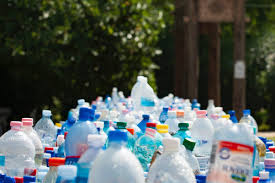
PET Recycling: From Trash to Treasure
Polyethylene terephthalate(also known as PET is one of the most widely used plastics in the world, primarily found in products such as water bottles, soft containers for drinks, as well as food containers. Although PET is widely praised because of its strength and sustainability, it is also recyclable, effective PET recycling is crucial to minimizing environmental impact and promoting sustainability.
Understanding PET
recycle PET is a form of thermoplastic polymer that is extremely light, robust and impervious to moisture. It is employed in many different applications due to its clarity high strength-to-weight ratio, and capability to be moulded into various shapes. However, the environmental problem stems from the fact that PET can take as long as 500 years to degrade in a landfill, making recycling an essential practice.
The PET Recycling Process
Recycling PET involves several key steps to ensure that the plastic will be recycled and reused in a sustainable manner:
Collection and Sorting: The recycling process begins with the collection of PET bottles and containers. Then, these items are sorted against other plastics and other contaminants. Sorting can be done manually or with advanced technologies like optical scanners.
Cleaning and Shredding: Once sorted after which the PET products are cleaned in order to get rid of labels residues, residues, as well as other impurities. After being cleaned, the PET is shredded into small flakes or pellets. This is essential to ensure that the material recycled is free of contamination that could impact its quality.
Processing and Pelletizing The shredded PET is later processed, usually by extrusion, where it is melting and then shaped into tiny pellets. These pellets can then be utilized to make new PET products or blended with other materials in order to create composite products.
Production of New Products: The recycled PET pellets are utilized to create new products, from more PET bottles to clothing fibers, carpeting, and automotive parts. This is the final step for recycling, transforming old PET products into valuable new items.
Benefits of PET Recycling
Recycling PET offers numerous environmental advantages. It decreases the demand for virgin materials, conserving natural resources, and also reducing consumption of energy. Recycling can also help reduce greenhouse gas emissions as well as the amount of waste that is disposed into landfills. Through recycling PET in this way, we can also lessen the environmental impact that comes with the manufacturing as well as disposal.
Challenges and Future Directions
Despite its advantages, PET recycling faces challenges such as pollution, a lack of infrastructure, and limited consumer participation. However, advancements in recycling technology and increased awareness are helping address these challenges. Innovative technologies like chemical recycling, which reduces PET into monomers to be reused, provide promising solutions for enhancing the efficiency of recycling.
Conclusion
PET recycling is an essential practice for promoting environmental sustainable practices and decreasing the ecological footprint of plastic waste. By understanding and participating in the recycling process both communities and individuals can help create a more sustainable future and ensure the fact that PET remains a viable resource rather than a persistent environmental problem.